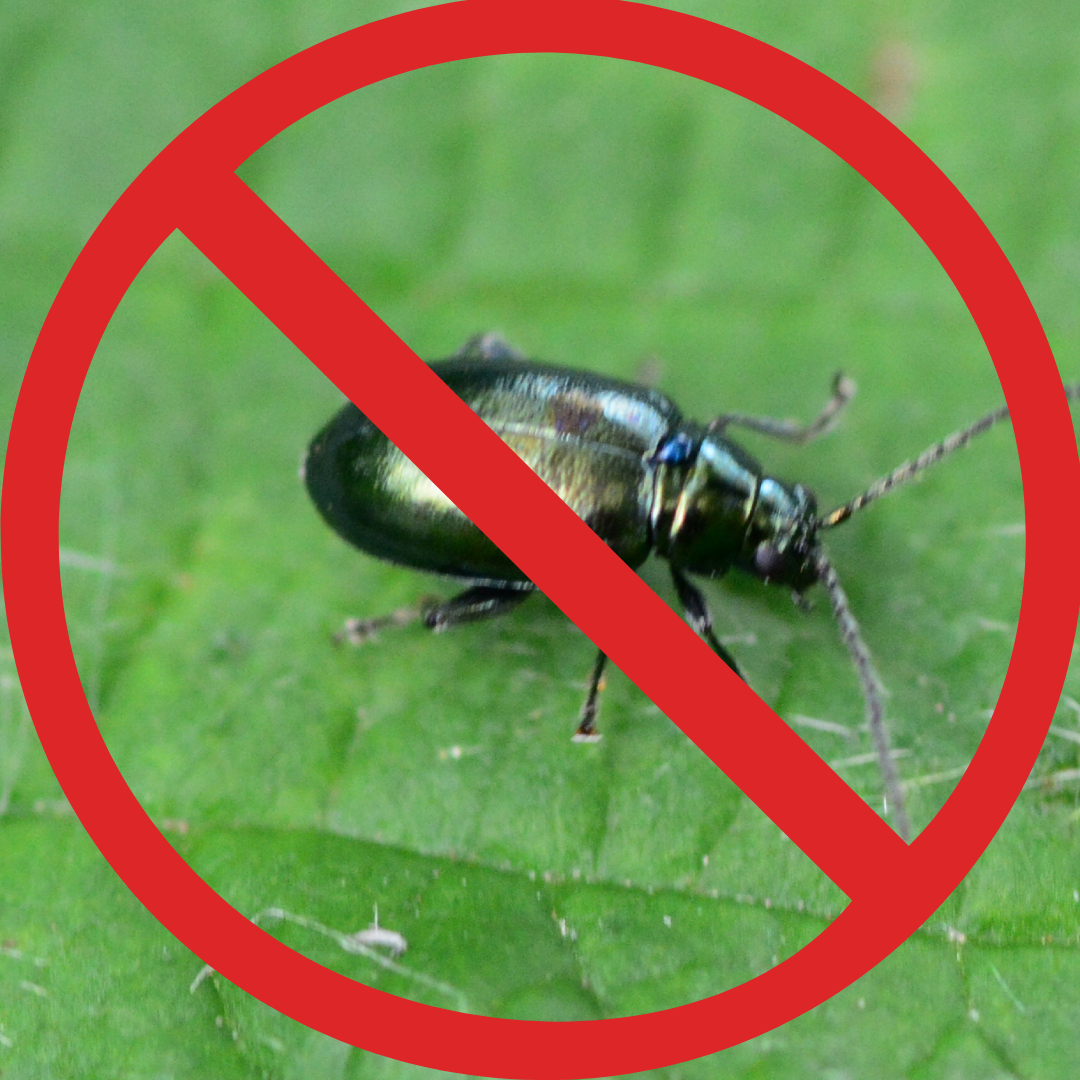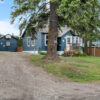How to Battle This Backyard Bandit in Your Garden
If you’ve lived (or gardened) in the Creston Valley for more than five minutes, chances are you’ve had a run-in with the flea beetle—a tiny pest with a big appetite and an even bigger reputation.
These little jumpers are notorious for chewing up brassicas, root veggies, and leafy greens, often turning a lush spring garden into a patchwork of holes overnight. They’re not just annoying—they can stunt growth, damage seedlings, and ruin harvests if left unchecked.
So let’s talk about what they are, why they love Creston so much, and what you can do to keep them in check.
🕵️♀️ What Are Flea Beetles?
Flea beetles are small, shiny black or brown beetles—about the size of a poppy seed—with powerful hind legs that let them jump like fleas (hence the name). They’re particularly fond of:
Arugula
Radishes
Cabbage, broccoli, kale & other brassicas
Beets, potatoes, and turnips
Occasionally peppers and tomatoes
They’re early risers, often appearing in late April through early June—just when your seedlings are most vulnerable.
🌿 Why Are They So Bad in the Creston Valley?
Creston’s warm springs, dry weather, and abundance of small-scale veggie gardens make it flea beetle paradise. The Valley’s rich agricultural environment provides the perfect buffet—especially for those planting early crops and leafy greens.
With few natural predators and many of us using organic growing methods, they’ve become a persistent and widespread nuisance.
💣 How to Fight Back: Flea Beetle Remedies
There’s no single solution—but here’s a multi-pronged strategy to reduce or eliminate flea beetle problems in your garden:
🛡️ 1. Row Covers Are Your Best Friend
Use floating row covers (like Agribon or Remay) to physically block flea beetles from accessing your young plants. These are lightweight and let in light and water but keep bugs out.
👉 Tip: Make sure to seal the edges well—even a small gap invites invaders.
🌱 2. Plant Decoys or Trap Crops
Flea beetles love radishes—even more than kale. Plant a border of sacrificial radishes early and let the beetles munch on those instead.
👉 Just be sure to pull the trap crop before it becomes a breeding ground.
🌼 3. Diatomaceous Earth (DE)
Dust the soil and leaves around your seedlings with food-grade DE. It’s a fine powder made from fossilized algae that damages the beetle’s exoskeleton.
👉 Reapply after rain or heavy dew.
🧼 4. Neem Oil or Soapy Sprays
A light spray of neem oil or diluted castile soap + water can repel flea beetles and reduce feeding. Just avoid using it during the hottest part of the day.
🌸 5. Interplant with Strong-Smelling Herbs
Flea beetles don’t love strong aromas. Try mixing in:
Dill
Basil
Catnip
Marigolds
These can act as natural deterrents when planted throughout your rows.
🔁 6. Rotate Crops & Clean Up Debris
Don’t plant brassicas or leafy greens in the same spot year after year. Flea beetles overwinter in soil and plant debris, so rotating crops and cleaning up in the fall can break their lifecycle.
🐔 Bonus Tip: Chickens Love Them!
If you’re homesteading, let your chickens scratch through garden beds in the off-season. They’ll find flea beetle larvae and eggs before they ever become a problem.
🌻 You’re Not Alone
Ask any local gardener and you’ll hear the same thing: “They’re relentless—but beatable.”
Controlling flea beetles in the Creston Valley takes persistence, creativity, and early intervention. But with the right plan, you can absolutely grow gorgeous, hole-free greens and root crops all season long.
Have a go-to remedy that’s worked in your garden? Drop me a line—I’d love to share more community-tested tips in future posts! (Word on the street- Jo Ferris may be having some success with cornmeal!) Stay tuned!
Diana Klejne
Your local real estate agent, homesteader, and ally in all things Creston Valley
📧 DianaKlejne@gmail.com | 📞 604-789-8202
🌐 www.KootenayLifestyle.ca








